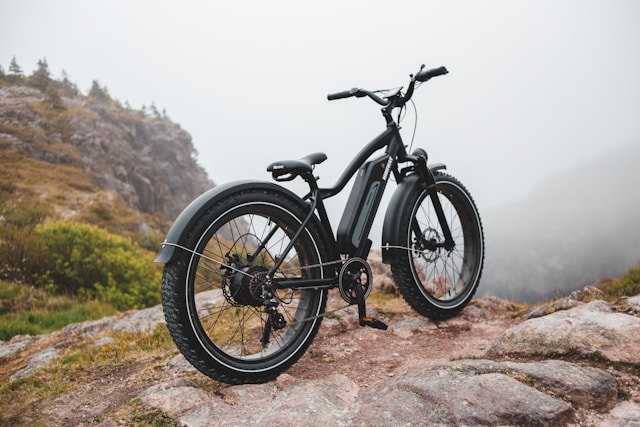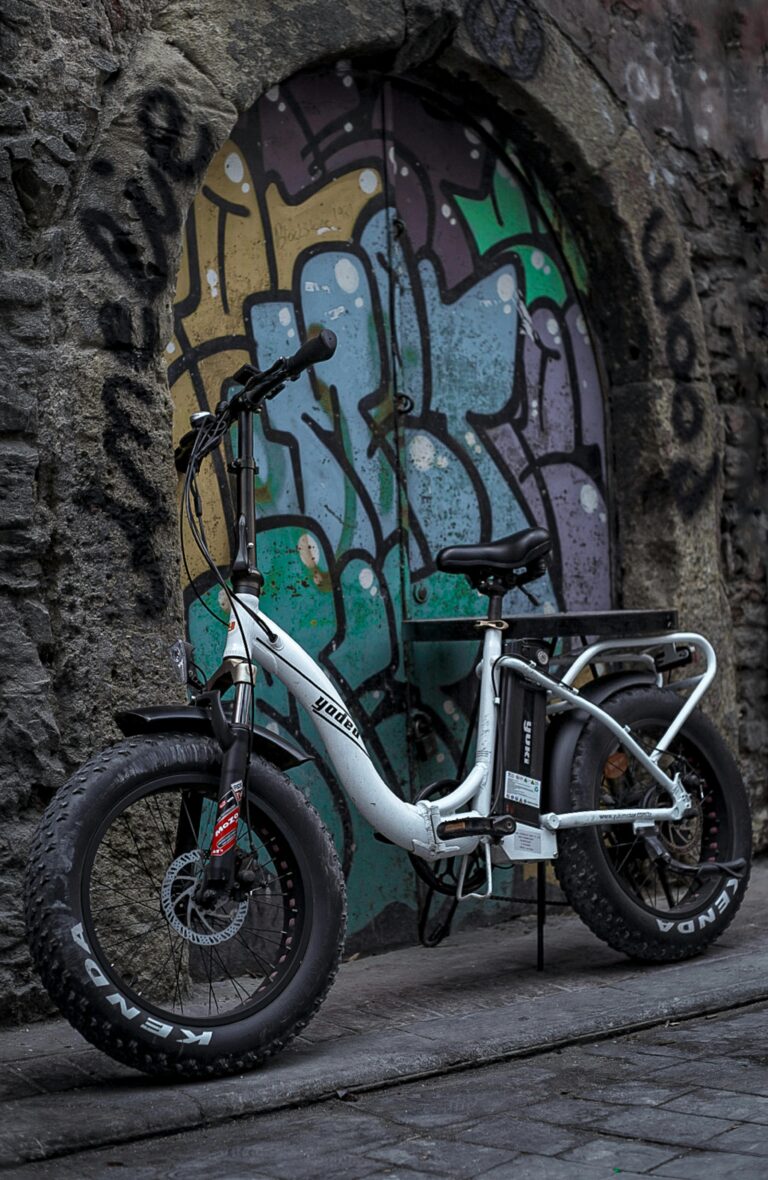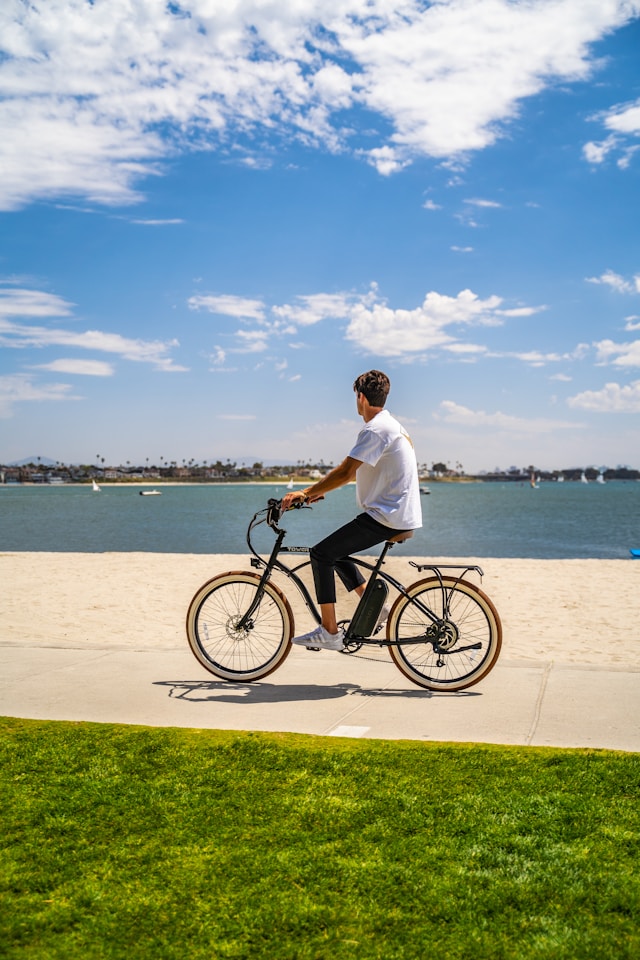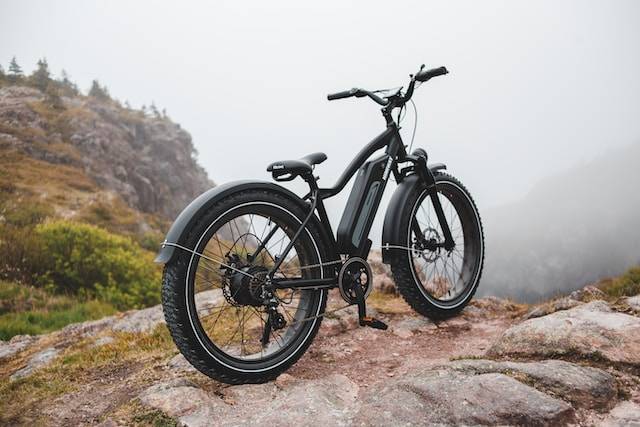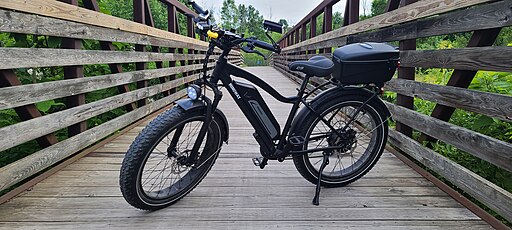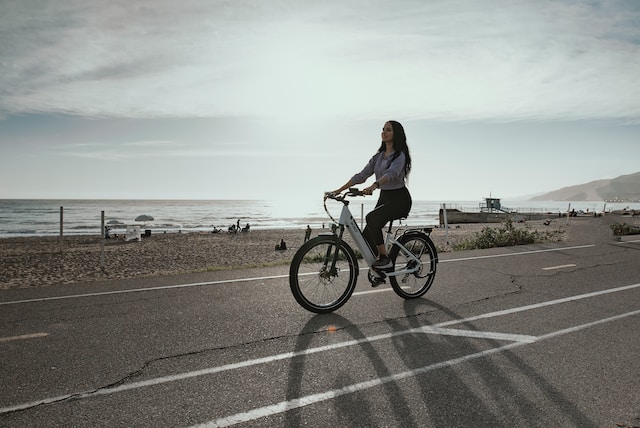Safety First: Helmet and Protective Gear Guide for Electric Mountain Bikers
Electric mountain biking is an exhilarating adventure, offering riders the opportunity to explore rugged terrain and conquer challenging trails with the added thrill of electric assistance. However, amidst the excitement and adrenaline rush, it’s crucial never to overlook the paramount importance of safety. Just as with traditional mountain biking, navigating the trails on an electric mountain bike (e-MTB) demands a keen awareness of potential hazards and a commitment to minimizing risk.
In the world of outdoor sports, safety gear stands as an indispensable companion for enthusiasts of all levels. For electric mountain bikers, this gear serves as the frontline defense against injuries and accidents, providing crucial protection against the unpredictable elements of off-road riding. From helmets and goggles to knee pads and gloves, each piece of equipment plays a vital role in safeguarding riders from potential harm.
This guide is crafted with a singular purpose in mind: to empower electric mountain bikers with the knowledge and resources necessary to prioritize safety on every ride. Whether you’re a seasoned rider seeking to upgrade your protective gear or a newcomer eager to embark on your first e-MTB adventure, this comprehensive resource is designed to be your trusted companion.
Throughout the following sections, we’ll delve into the intricacies of selecting the right helmet, understanding the benefits of protective gear, and exploring the latest technologies aimed at enhancing rider safety. From recommendations on weather-resistant gear for unpredictable conditions to essential precautions for night riding, each aspect of safety will be thoroughly explored and discussed.
By embracing the principles of safety-first riding and equipping yourself with the appropriate gear, you not only enhance your own well-being but also contribute to the thriving community of responsible electric mountain bikers. So, let’s embark on this journey together, prioritizing safety at every turn and ensuring that your e-MTB adventures are as exhilarating as they are secure.
Key Takeaways
- Safety First: Prioritize safety by wearing a helmet and protective gear every time you ride your electric mountain bike.
- Helmet Selection: Choose a helmet with MIPS technology for enhanced protection against rotational forces during impacts.
- Protective Gear: Invest in knee and elbow pads to minimize the risk of injuries and enhance rider confidence on challenging trails.
- Goggle Comparison: Select goggles with clear, tinted, or photochromic lenses to adapt to varying light conditions and improve visibility on the trail.
- Weather Resistance: Equip yourself with waterproof and weather-resistant gear to stay dry, comfortable, and protected during e-MTB adventures in unpredictable conditions.
- Glove Selection: Opt for gloves with padded palms and breathable materials to enhance grip, comfort, and hand protection while riding.
- Night Riding Precautions: Take extra precautions when night riding, including using proper lighting, wearing reflective gear, and staying vigilant of potential hazards on the trail.
- Fit and Comfort: Ensure your protective gear fits properly and comfortably, allowing for freedom of movement and optimal performance.
- Maintenance: Regularly clean and maintain your gear to prolong its lifespan and effectiveness, ensuring reliable protection on every ride.
- Community Engagement: Join the conversation by sharing your experiences, tips, and questions with fellow riders in the electric mountain biking community.
Choosing the Right Helmet
Importance of a Helmet in Electric Mountain Biking:
In the realm of electric mountain biking, where the thrill of conquering challenging terrain meets the potential risks of off-road riding, the helmet stands as a non-negotiable piece of protective equipment. Beyond being a mere accessory, a helmet is your first line of defense against the unexpected obstacles and hazards that may arise on the trail.
Whether you’re navigating rocky descents, tackling steep inclines, or maneuvering through tight corners, the helmet serves as a shield, offering vital protection to your head and brain in the event of a fall or collision. In the dynamic environment of off-road riding, where terrain conditions can change in an instant, wearing a helmet isn’t just a precaution—it’s a proactive measure to safeguard your well-being and mitigate the inherent risks of the sport.
Key Features to Consider When Selecting a Helmet:
When it comes to choosing the right helmet for electric mountain biking, several key features warrant careful consideration. Firstly, opt for a helmet specifically designed for mountain biking or e-MTB, as these models typically offer enhanced coverage and durability compared to standard bike helmets.
Look for helmets that boast advanced safety technologies, such as MIPS (Multi-directional Impact Protection System) or similar systems, which are engineered to reduce rotational forces during impacts, thereby minimizing the risk of brain injury. Additionally, prioritize helmets with ample ventilation to ensure optimal airflow and comfort during long rides, especially in warm weather conditions.
Durability and construction quality are also paramount considerations. Seek helmets constructed from high-quality materials, such as polycarbonate or carbon fiber, which offer superior strength and impact resistance. Furthermore, adjustable retention systems and dial-fit mechanisms can aid in achieving a customized and secure fit, enhancing both safety and comfort on the trail.
Tips on Finding the Perfect Fit:
Achieving a proper fit is essential to the effectiveness of your helmet. Start by measuring your head circumference and selecting a helmet size accordingly. Once you’ve chosen a helmet, adjust the retention system to snugly fit around your head, ensuring a secure yet comfortable fit. The helmet should sit level on your head, with the front edge positioned just above your eyebrows.
Perform a series of fit tests, including shaking your head vigorously from side to side and nodding up and down to ensure the helmet remains in place without shifting or sliding. Pay close attention to pressure points or discomfort, as these may indicate an improper fit. Remember, a well-fitted helmet should provide ample coverage and protection without sacrificing comfort or restricting movement.
By prioritizing safety and selecting a helmet that meets your specific needs and preferences, you can embark on your electric mountain biking adventures with confidence, knowing that you’re equipped with the essential gear to ride smart and ride safe.
RELATED CONTENT – The Ultimate Guide to Electric Mountain Bike Trails Around the World
RELATED CONTENT – Fat Tire Electric Bikes vs Traditional Mountain Bikes
Benefits of Wearing Protective Gear
When it comes to electric mountain biking, embarking on adrenaline-fueled adventures amidst the rugged terrain requires more than just skill and determination—it demands a commitment to safety. As you gear up for your next e-MTB excursion, donning protective gear isn’t merely a precaution; it’s a proactive measure to safeguard your well-being and enhance your overall riding experience.
Highlighting the Advantages:
The benefits of wearing protective gear while e-mountain biking extend far beyond mere peace of mind. By investing in quality gear and prioritizing safety, riders can reap a multitude of advantages that enhance both their performance and enjoyment on the trail.
First and foremost, protective gear serves as a crucial barrier between riders and potential injuries. Whether it’s a well-fitted helmet that shields your head from impacts or durable knee pads that absorb shock during falls, each piece of gear plays a vital role in minimizing the risk of injuries and mitigating the impact of accidents.
Emphasizing Injury Prevention and Rider Safety:
In the dynamic and unpredictable environment of off-road riding, accidents can happen in the blink of an eye. However, by equipping yourself with comprehensive protective gear, you significantly reduce the likelihood of sustaining serious injuries. From abrasions and lacerations to more severe trauma such as concussions and fractures, protective gear acts as a crucial line of defense, providing vital protection to vulnerable areas of the body.
Moreover, the importance of rider safety cannot be overstated. By prioritizing safety and incorporating protective gear into your riding routine, you not only safeguard your own well-being but also contribute to a culture of responsible riding within the e-MTB community. By setting a positive example and adhering to safety best practices, you help foster a supportive and inclusive environment where riders of all levels can enjoy the sport safely and responsibly.
Discussing the Importance of Comprehensive Protection:
Comprehensive protection is key to ensuring optimal safety and confidence on the trail. While helmets may serve as the cornerstone of protective gear, it’s essential to adopt a holistic approach to safety by incorporating additional gear such as knee and elbow pads, gloves, and goggles.
Each piece of protective gear offers unique benefits and addresses specific areas of vulnerability, providing an added layer of defense against potential hazards. By embracing a comprehensive approach to protection, riders can minimize the risk of injuries and ride with greater confidence and peace of mind.
RELATED CONTENT – Can Fat Tire Electric Bikes Handle Bikepacking or Long Distance Touring?
RELATED CONTENT – Electric Mountain Biking 101 – Essential Skills and Techniques
Top-Rated Helmets with MIPS Technology
Explanation of MIPS (Multi-directional Impact Protection System) Technology:
MIPS, short for Multi-directional Impact Protection System, is an innovative safety technology designed to reduce the rotational forces transmitted to the brain during certain impacts. Traditional helmets are primarily engineered to provide linear impact protection, absorbing direct blows to the head. However, in real-world scenarios, many impacts occur at oblique angles, leading to rotational forces that can result in traumatic brain injuries.
MIPS technology addresses this issue by incorporating a low-friction layer between the helmet’s outer shell and the inner liner. This layer allows the helmet to rotate slightly upon impact, effectively redirecting and dissipating rotational forces away from the head. By minimizing rotational motion, MIPS helps reduce the risk of brain injuries such as concussions and diffuse axonal injuries, enhancing overall rider safety.
Review and Comparison of Top-Rated Helmets with MIPS for Electric MTB Riders:
1. Bell Super Air R MIPS Helmet:
- Overview: The Bell Super Air R MIPS Helmet is a top choice for electric MTB riders seeking maximum protection and ventilation.
- Features: MIPS Spherical technology, adjustable visor, Overbrow Ventilation, Float Fit System, and Fusion In-Mold polycarbonate shell.
- Specs: Weight: 640 grams, 18 vents, CPSC Bicycle safety standards certified.
- Pros: Excellent ventilation, comfortable fit, easy-to-adjust visor, integrated MIPS for enhanced safety.
- Cons: Higher price point, limited color options.
- User Review Statements: “The Bell Super Air R MIPS Helmet offers unparalleled comfort and protection on the trails.” – MTB enthusiast.
- Price: $250
- Where to Get: Available at major bike retailers and online stores.
2. Giro Chronicle MIPS Helmet
- Overview: The Giro Chronicle MIPS Helmet combines rugged durability with advanced MIPS technology for superior protection.
- Features: MIPS technology, P.O.V. Plus visor, Roc Loc 5 fit system, CoolFit anti-microbial padding.
- Specs: Weight: 350 grams, 14 vents, ASTM F1952-15 downhill certified.
- Pros: Lightweight design, adjustable fit system, ample ventilation, proven MIPS protection.
- Cons: Visor adjustment can be stiff, limited color options.
- User Review Statements: “The Giro Chronicle MIPS Helmet offers unbeatable value and performance for electric MTB riders.” – Experienced rider.
- Price: $150
- Where to Get: Available at outdoor gear retailers and online platforms.
3. Troy Lee Designs A3 MIPS Helmet
- Overview: The Troy Lee Designs A3 MIPS Helmet combines cutting-edge safety technology with premium comfort and style.
- Features: MIPS Brain Protection System, X-Static XT2 padding, Fidlock magnetic buckle, adjustable visor.
- Specs: Weight: 425 grams, 16 vents, ASTM F1952-15, ASTM F2032-15 certified.
- Pros: Stylish design, secure fit, magnetic buckle for easy closure, exceptional MIPS protection.
- Cons: Slightly heavier than some competitors, higher price tag.
- User Review Statements: “The Troy Lee Designs A3 MIPS Helmet offers unmatched comfort and confidence on technical trails.” – Mountain biking enthusiast.
- Price: $300
- Where to Get: Available at specialty bike shops and online retailers.
4. POC Tectal Race Spin Helmet
- Overview: The POC Tectal Race Spin Helmet delivers uncompromising protection and performance for aggressive trail riding.
- Features: MIPS technology, Aramid bridge construction, adjustable visor, goggle compatibility.
- Specs: Weight: 340 grams, 15 vents, EN 1078, CPSC 12.03 certified.
- Pros: Lightweight and durable, excellent ventilation, seamless integration with goggles, reliable MIPS protection.
- Cons: Limited color options, higher price point.
- User Review Statements: “The POC Tectal Race Spin Helmet is a game-changer for riders who prioritize safety and performance.” – Enduro enthusiast.
- Price: $220
- Where to Get: Available at select bike shops and online retailers.
5. Fox Racing Speedframe Pro MIPS Helmet
- Overview: The Fox Racing Speedframe Pro MIPS Helmet offers a perfect balance of comfort, style, and cutting-edge safety technology.
- Features: MIPS impact protection system, dual-density Varizorb EPS liner, 360-degree fit system, goggle compatible.
- Specs: Weight: 360 grams, 20 vents, ASTM F1952-15, ASTM F2032-15 certified.
- Pros: Lightweight design, exceptional ventilation, secure fit, innovative MIPS technology.
- Cons: Limited color options, may run slightly small for some users.
- User Review Statements: “The Fox Racing Speedframe Pro MIPS Helmet delivers unbeatable protection and comfort on every ride.” – Dedicated rider.
- Price: $180
- Where to Get: Available at authorized Fox Racing dealers and online ret
These top-rated helmets with MIPS technology offer unparalleled protection and performance for electric MTB riders, ensuring you can tackle the trails with confidence and peace of mind.
RELATED CONTENT – 10 Must Have Accessories for Electric Mountain Bikers
Importance of Knee and Elbow Pads
When it comes to electric mountain biking, protecting vulnerable areas of the body is paramount to ensuring a safe and enjoyable riding experience. While helmets often take center stage in discussions about safety gear, the importance of knee and elbow pads should not be underestimated. These seemingly small pieces of equipment can make a significant difference in minimizing the risk of injuries and enhancing rider confidence on the trail.
Vulnerability of Knees and Elbows During Mountain Biking:
Mountain biking, especially on challenging terrain, exposes riders to a variety of potential hazards, including rocks, roots, and uneven surfaces. In the event of a fall or collision, the knees and elbows are particularly susceptible to impact and abrasion. The natural instinct to extend limbs to break a fall can result in direct contact with the ground, leading to painful scrapes, bruises, and, in more severe cases, fractures or dislocations.
Benefits of Wearing Knee and Elbow Pads for Protection:
Knee and elbow pads serve as a critical line of defense against the inherent risks of mountain biking. By providing cushioning and impact absorption, these pads help dissipate forces and reduce the likelihood of injuries to the joints and surrounding soft tissues. In addition to minimizing the risk of cuts, bruises, and abrasions, pads also offer crucial support and stability, helping to mitigate the impact of sudden impacts and awkward landings.
Moreover, knee and elbow pads can instill confidence in riders, allowing them to push their limits and tackle more challenging terrain with greater assurance. By alleviating concerns about potential injuries, riders can focus on honing their skills and enjoying the exhilarating experience of electric mountain biking to the fullest.
Recommendations for Choosing and Wearing Pads Effectively:
When selecting knee and elbow pads for electric mountain biking, several factors should be taken into consideration. Opt for pads that offer a balance of comfort, mobility, and protection, ensuring a snug yet non-restrictive fit that allows for full range of motion. Look for pads constructed from high-quality materials, such as impact-resistant foam or gel padding, with durable outer shells to withstand repeated impacts and abrasions.
Additionally, pay attention to design features such as adjustable straps and breathable mesh panels, which enhance comfort and customization. It’s also essential to ensure proper placement of the pads, with knee pads covering the entire knee cap and extending slightly above and below, while elbow pads should provide full coverage of the elbow joint.
When wearing knee and elbow pads, remember to secure them snugly but not too tight, allowing for adequate circulation and mobility. Conduct fit tests and range of motion exercises to ensure the pads stay in place during dynamic movements, making any necessary adjustments as needed.
By prioritizing the use of knee and elbow pads, electric mountain bikers can mitigate the risk of injuries and ride with greater confidence and peace of mind, allowing them to fully embrace the thrill of off-road adventures.
Comparing Different Types of Goggles
Overview of the Importance of Eye Protection in Electric Mountain Biking:
In the exhilarating world of electric mountain biking, riders are immersed in the beauty of nature and the thrill of conquering challenging terrain. However, amidst the adrenaline rush and breathtaking landscapes, it’s essential never to overlook the importance of protecting your eyes from potential hazards. Whether it’s dust and debris kicked up by fellow riders or branches and insects encountered on the trail, maintaining clear vision is crucial to ensuring a safe and enjoyable riding experience.
Comparison of Different Types of Goggles for e-MTB
When it comes to eye protection in electric mountain biking, goggles are a popular choice among riders seeking comprehensive coverage and optimal visibility. Several types of goggles are available, each offering unique features and benefits tailored to the demands of off-road riding.
- Clear Lens Goggles:
- Overview: Clear lens goggles are ideal for low-light conditions and night riding, providing maximum visibility without tint or color distortion.
- Features: Anti-fog coating, scratch-resistant lens, wide peripheral vision.
- Benefits: Enhanced visibility in dimly lit environments, protection against debris and insects.
- Recommended for: Night riding, overcast conditions, or anytime maximum visibility is required.
- Tinted Lens Goggles:
- Overview: Tinted lens goggles offer sun protection and glare reduction, making them well-suited for bright daylight conditions.
- Features: UV protection, polarized or mirrored lenses, adjustable straps.
- Benefits: Reduced eye strain, improved contrast and depth perception, protection against harmful UV rays.
- Recommended for: Sunny days, open terrain with high sun exposure, riding at higher altitudes.
- Photochromic Goggles:
- Overview: Photochromic goggles feature lenses that automatically adjust tint levels based on changing light conditions, providing versatility and convenience.
- Features: Light-sensitive lenses, quick transition between tint levels, durable frame construction.
- Benefits: Seamless adaptation to varying light conditions, optimal visibility in changing environments.
- Recommended for: Riders who frequently encounter shifting light conditions or prefer the convenience of automatic tint adjustment.
Factors to Consider When Selecting Goggles for Specific Riding Conditions:
When choosing goggles for electric mountain biking, several factors should be taken into account to ensure optimal performance and comfort:
- Fit and Comfort: Look for goggles with a snug yet comfortable fit that seals securely around your face without causing pressure points or discomfort.
- Ventilation: Opt for goggles with ample ventilation to prevent fogging and maintain airflow, especially during intense riding sessions.
- Durability: Consider the durability of the goggles’ construction and materials, ensuring they can withstand impacts and rough handling on the trail.
- Lens Technology: Evaluate the quality and clarity of the lenses, as well as any additional features such as anti-fog coatings, scratch resistance, and UV protection.
- Compatibility: Ensure compatibility with your helmet and other protective gear, allowing for seamless integration and optimal performance.
By carefully considering these factors and selecting goggles that align with your specific riding needs and preferences, you can enjoy enhanced visibility and protection on every electric mountain biking adventure.
RELATED CONTENT – Riding an Electric Bike in the Rain: Tips, Safety and Gear
Waterproof and Weather-Resistant Gear
Discussion on the Necessity of Weather-Resistant Gear for e-MTB Adventures
Electric mountain biking enthusiasts are no strangers to the unpredictable whims of Mother Nature. From sudden downpours and muddy trails to gusty winds and fluctuating temperatures, e-MTB adventures often unfold amidst a dynamic tapestry of weather conditions. In such environments, the importance of investing in waterproof and weather-resistant gear cannot be overstated.
Weather-resistant gear serves as a shield against the elements, providing riders with the protection and comfort needed to tackle the trails with confidence and resilience. Whether it’s a waterproof jacket to fend off rain showers or thermal layers to combat chilly temperatures, the right gear can mean the difference between an exhilarating ride and a soggy, uncomfortable ordeal.
Recommendations for Waterproof Clothing and Gear
When it comes to selecting waterproof and weather-resistant gear for electric mountain biking, there are several key considerations to keep in mind:
- Waterproof Jackets: Look for jackets constructed from breathable yet waterproof materials such as Gore-Tex or eVent, with sealed seams and adjustable hoods to keep moisture out. Opt for jackets with ventilation features to prevent overheating during intense rides.
- Waterproof Pants or Shorts: Invest in waterproof pants or shorts to keep your lower body dry and comfortable, especially when riding through wet and muddy terrain. Consider options with reinforced seat and knee areas for added durability.
- Waterproof Gloves: Choose gloves with waterproof and windproof materials to keep your hands warm and dry in inclement weather. Look for options with insulation and touchscreen-compatible fingertips for added functionality.
- Waterproof Shoes or Shoe Covers: Keep your feet dry and protected with waterproof cycling shoes or shoe covers designed specifically for mountain biking. Look for options with grippy soles and adjustable closures for a secure fit.
- Waterproof Backpack or Gear Bag: Invest in a waterproof backpack or gear bag to protect your belongings from moisture and rain during rides. Look for options with multiple compartments and hydration bladder compatibility for added convenience.
Tips for Maintaining Gear in Various Weather Conditions:
Proper maintenance is essential to prolonging the lifespan and effectiveness of waterproof and weather-resistant gear. Here are some tips to help you care for your gear in various weather conditions:
- Regular Cleaning: Clean your gear after each ride to remove dirt, mud, and sweat, which can compromise waterproofing and breathability.
- Drying: Hang your gear to air dry after use, avoiding direct sunlight or heat sources, which can damage materials and reduce effectiveness.
- Storage: Store your gear in a cool, dry place when not in use, away from moisture and humidity.
- Reproofing: Periodically reapply waterproofing treatments to restore water repellency and maintain performance.
By investing in high-quality waterproof and weather-resistant gear and adopting proper maintenance practices, electric mountain bikers can ride confidently in any weather conditions, knowing they’re equipped to face the elements head-on.
RELATED CONTENT – Electric Bike Safety Commuting Gear
Choosing the Right Gloves
Importance of Gloves for Grip and Hand Protection
Gloves are often regarded as a staple piece of gear for electric mountain biking, and for good reason. Beyond serving as a barrier against blisters and calluses, gloves play a crucial role in enhancing grip, damping vibrations, and providing essential protection for the hands during off-road riding adventures.
When navigating rugged terrain and technical trails on an electric mountain bike, riders are constantly subjected to the jolts and impacts of the terrain. Without the proper hand protection, prolonged exposure to these forces can lead to discomfort, fatigue, and even injury. Gloves act as a buffer, absorbing shocks and vibrations, while also shielding the hands from abrasions and trail debris.
Features to Consider When Selecting Gloves for Electric Mountain Biking:
When choosing gloves for electric mountain biking, it’s essential to consider a range of factors to ensure optimal performance and comfort:
- Material: Look for gloves constructed from durable and breathable materials such as synthetic leather or silicone grips. These materials offer excellent durability and grip, while also allowing for airflow to keep hands cool and dry.
- Padding: Opt for gloves with strategically placed padding or gel inserts in the palm area to absorb shocks and vibrations, reducing hand fatigue on long rides.
- Fit: Ensure a snug yet comfortable fit that allows for dexterity and freedom of movement. Avoid gloves that are too tight, as they can restrict blood flow and cause discomfort, while excessively loose gloves may compromise grip and control.
- Ventilation: Choose gloves with perforated or mesh panels to promote airflow and prevent overheating during intense rides. Ventilated gloves help wick away sweat and moisture, keeping hands cool and comfortable.
- Protection: Look for gloves with reinforced knuckle and finger protection to safeguard against impacts and trail hazards. Consider options with extended cuffs for added wrist support and coverage.
Recommendations for Different Riding Styles and Conditions:
The best gloves for electric mountain biking will vary depending on individual preferences, riding style, and environmental conditions. Here are some recommendations tailored to different scenarios:
- Trail Riding: For general trail riding, consider lightweight gloves with moderate padding and breathable materials for all-day comfort and grip.
- Downhill Riding: Opt for full-fingered gloves with extra padding and reinforced protection for aggressive downhill descents, where impacts and abrasions are more common.
- Cold Weather Riding: In colder temperatures, choose insulated gloves with fleece lining or windproof materials to keep hands warm and comfortable, without sacrificing grip or dexterity.
- Wet Weather Riding: For wet and muddy conditions, select waterproof gloves with sealed seams and durable materials to keep hands dry and protected from the elements.
By carefully considering these factors and selecting gloves that align with your specific riding needs and preferences, you can enjoy enhanced grip, comfort, and protection on every electric mountain biking adventure.
Safety Precautions for Night Riding
Highlighting the Unique Risks Associated with Night Riding on Electric Mountain Bikes:
Night riding on electric mountain bikes (e-MTBs) presents a unique set of challenges and risks that riders must be aware of and prepared for. Unlike daytime riding, where visibility is generally clearer and obstacles are more visible, riding in low-light conditions amplifies the inherent hazards of off-road biking.
One of the primary risks of night riding is reduced visibility, which can obscure obstacles, trail features, and potential hazards. Shadows cast by bike lights can create deceptive depth perception, making it difficult to gauge the terrain accurately. Additionally, wildlife and other trail users may be less visible at night, increasing the risk of collisions and accidents.
Furthermore, night riding often involves navigating unfamiliar trails or terrain, which can pose additional challenges in terms of route finding and navigation. Without proper preparation and precautions, night riding can quickly become treacherous and unsafe.
Safety Precautions and Tips for Riding in Low-Light Conditions:
To mitigate the risks associated with night riding on electric mountain bikes, it’s essential to observe the following safety precautions and tips:
- Use Proper Lighting: Invest in high-quality bike lights with both a powerful headlight and a bright taillight to illuminate the trail ahead and make your presence known to other trail users. Mount lights securely on your bike and helmet for maximum visibility.
- Plan Your Route: Familiarize yourself with the trails you intend to ride before setting out at night. Choose well-marked and well-maintained trails with clear signage to minimize the risk of getting lost or disoriented.
- Ride with a Buddy: Whenever possible, ride with a companion or in a group when night riding. Not only does riding with others enhance safety by providing assistance in case of emergencies, but it also adds an element of camaraderie and enjoyment to the experience.
- Stay Alert and Vigilant: Maintain a heightened sense of awareness and caution while night riding, scanning the trail ahead for obstacles and hazards. Slow down and adjust your speed to match your visibility and comfort level.
- Dress Appropriately: Wear reflective clothing and accessories to increase your visibility to others on the trail. Consider wearing bright colors and reflective gear that stand out in low-light conditions, making it easier for other trail users to spot you.
Importance of Reflective Gear and Proper Lighting:
Reflective gear and proper lighting are essential components of night riding safety, serving to enhance visibility and minimize the risk of accidents. Reflective clothing, accessories, and bike decals increase your visibility to other trail users, particularly drivers and cyclists, reducing the likelihood of collisions.
Additionally, bike lights play a crucial role in illuminating the trail ahead, providing clarity and visibility in low-light conditions. A bright headlight illuminates obstacles and hazards, while a taillight alerts others to your presence and helps prevent rear-end collisions.
By prioritizing safety precautions such as proper lighting, reflective gear, and heightened awareness, electric mountain bikers can enjoy the thrill of night riding while minimizing the associated risks.
FAQs
A: Helmets are essential for electric mountain biking as they provide vital protection for the head and brain in the event of a fall or collision. The rugged terrain and challenging trails encountered during e-MTB adventures increase the risk of accidents, making head injuries a significant concern. Wearing a helmet significantly reduces the severity of head injuries and can save lives. It’s a non-negotiable piece of safety equipment for riders of all skill levels.
A: When choosing a helmet for electric mountain biking, several key features are worth considering. Look for helmets with MIPS (Multi-directional Impact Protection System) or similar technologies, which help reduce rotational forces during impacts. Opt for models with ample ventilation to prevent overheating, and adjustable fit systems for a customized and secure fit. Additionally, prioritize helmets with extended coverage to provide enhanced protection for the back of the head and temples.
A: Yes, selecting the right gloves is crucial for comfort, grip, and hand protection while electric mountain biking. Look for gloves with padded palms to absorb shocks and vibrations, reducing hand fatigue on rough terrain. Choose breathable materials to keep hands cool and dry, and ensure a snug yet comfortable fit for optimal dexterity and control. Consider gloves with touchscreen-compatible fingertips if you frequently use electronic devices on the trail.
A: Proper fit is essential for the effectiveness of protective gear. When trying on helmets, gloves, knee pads, or elbow pads, ensure they fit snugly but comfortably without any pressure points or gaps. Adjust straps and closures as needed to achieve a secure fit, and perform range of motion tests to ensure freedom of movement. Remember, protective gear should stay in place during dynamic movements without shifting or sliding.
A: Yes, weather-resistant gear is essential for electric mountain biking, especially when riding in variable or inclement weather conditions. Waterproof jackets, pants, and gloves help keep you dry and comfortable, while windproof materials provide added protection against cold temperatures and gusty winds. Weather-resistant gear enhances comfort and safety on the trail, allowing you to ride confidently in any weather conditions.
A: While regular sunglasses may offer some protection against glare and UV rays, they are not designed specifically for the demands of off-road biking. Opting for purpose-built cycling glasses or goggles provides superior impact resistance, coverage, and clarity, protecting your eyes from debris, insects, and harsh sunlight. Look for models with interchangeable lenses and adjustable frames for versatility and customization.
A: The lifespan of protective gear varies depending on factors such as usage frequency, intensity, and exposure to wear and tear. As a general rule of thumb, helmets should be replaced every 5-7 years, or sooner if they have been involved in a significant impact or show signs of damage. Gloves, knee pads, and elbow pads may need replacing more frequently, particularly if they exhibit signs of wear, tear, or deterioration in performance.
Conclusion
As electric mountain biking continues to gain popularity among outdoor enthusiasts, it’s essential for riders to prioritize safety and equip themselves with the appropriate gear for their adventures. From helmets and gloves to knee pads and goggles, each piece of protective equipment plays a crucial role in enhancing rider safety and confidence on the trail.
By understanding the importance of safety gear and considering factors such as fit, features, and weather resistance, electric mountain bikers can make informed choices to ensure their well-being while exploring rugged terrain and challenging trails.
Whether you’re a seasoned rider or new to the sport, taking the time to invest in quality gear and adhere to safety best practices is paramount to enjoying the thrill of electric mountain biking responsibly. So, gear up, hit the trails, and ride with confidence knowing you’re prepared for whatever the adventure may bring.
Join the Conversation
Have questions about selecting the right gear for your electric mountain biking adventures? Want to share your own experiences or tips for staying safe on the trails? We’d love to hear from you! Leave a comment below and join the conversation. Don’t forget to share this guide with your fellow riders to spread the word about the importance of safety gear in electric mountain biking. Happy riding!
External Sources
- International Mountain Bicycling Association (IMBA):
- Website: https://www.imba.com/
- IMBA offers a wealth of resources and educational materials on mountain biking safety, trail etiquette, and sustainable trail development.
- National Association of City Transportation Officials (NACTO):
- Website: https://nacto.org/
- NACTO’s Urban Bikeway Design Guide provides valuable insights into bicycle infrastructure design and safety considerations for urban environments, including tips for riding safely in traffic.
- Helmet Safety Institute:
- Website: https://helmets.org/
- The Helmet Safety Institute provides in-depth information on helmet safety standards, testing procedures, and recommendations for choosing the right helmet for various activities, including mountain biking.
- Consumer Reports:
- Website: https://www.consumerreports.org/
- Consumer Reports conducts independent testing and reviews of cycling gear, including helmets, gloves, and protective equipment, to help consumers make informed purchasing decisions.
- PubMed Central:
- Website: https://www.ncbi.nlm.nih.gov/pmc/
- PubMed Central is a free digital archive of biomedical and life sciences journal literature. Search for studies and research articles related to mountain biking safety, injury prevention, and protective gear effectiveness.
Kristina Grant is not just an enthusiast but a true authority on electric bikes. Nestled in the coastal beauty of Virginia, Kristina has found the perfect backdrop for her passion for electric biking. As a dedicated wife and homeschooling mom, her life revolves around family, faith, and the thrill of adventure.
Originally hailing from Ohio, Kristina's journey with electric bikes began as a curiosity and quickly evolved into a deep expertise. Her blog is a testament to her love for electric biking, combining her fascination for eco-friendly transportation with her coastal lifestyle.
When she's not cruising the beach on her electric bike, you'll find Kristina indulging in her other loves: long walks along the shore, getting lost in a good book, and cherishing moments with her loved ones. With a heart as big as her love for animals, especially cats, Kristina brings a unique perspective to the electric bike world, grounded in her strong faith in God and her dedication to a sustainable lifestyle.
Through her blog, Kristina shares her extensive knowledge of electric bikes, offering valuable insights, tips, and recommendations to fellow enthusiasts. Whether you're a seasoned rider or a newcomer to the electric bike scene, Kristina's blog is your go-to source for all things electric biking, fueled by her passion, expertise, and the scenic beauty of coastal Virginia.

